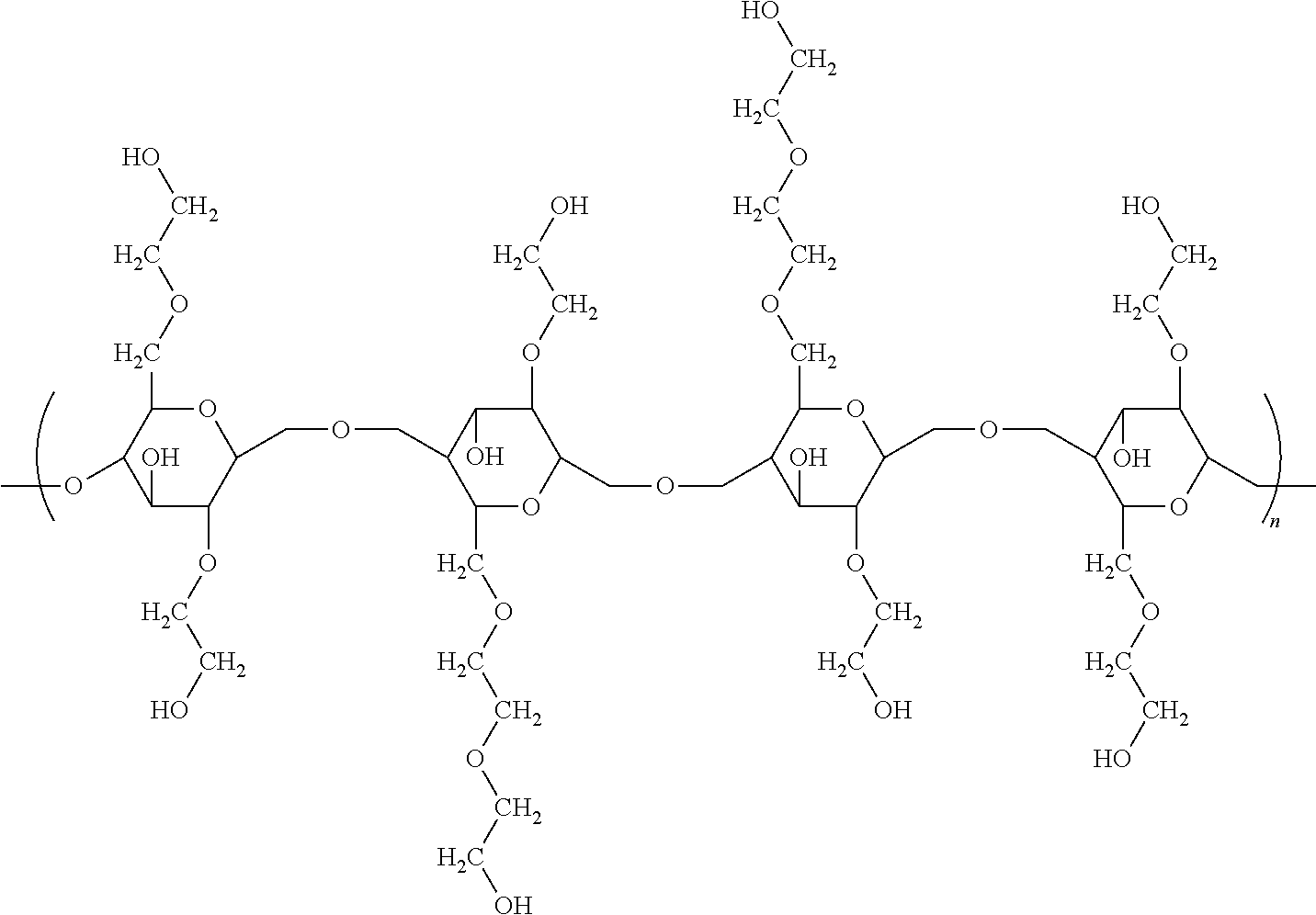Lactofen and dicamba diglycol amine liquid formulations
a technology of diglycol amine and liquid formulation, which is applied in the field of stable liquid premixture agricultural formulations comprising dicamba diglycol amine and lactofen, can solve the problems of inability to disperse, limited crop growers to certain active ingredients that can be applied simultaneously, and difficult to provide crop growing area with an even distribution of active ingredients
- Summary
- Abstract
- Description
- Claims
- Application Information
AI Technical Summary
Benefits of technology
Problems solved by technology
Method used
Image
Examples
example 1
Preparation of Formulations 1 to 4
[0047]The dicamba diglycol amine / lactofen formulations were prepared as follows. In a vessel containing a uniform mixture of water and emulsifier, a mixture of lactofen dissolved in solvent was added under high shear. The high shear is maintained until emulsification is complete (droplet size D50=0.306 um). This emulsion was added to a premade mixture of commercially available dicamba-DGA salt solution and thickener and mixed until uniform. Finally, the co-surfactant, biocide and antifoam were added and mixed until uniform.
TABLE 1Formulations 1 to 4% Weight of FormulationsFormulationFormulationFormulationFormulationIngredient1234Dicamba diglycol amine47.5 (27.08)50 (28.50)50 (28.50)53.36 (20.5)Lactofen8.5 (8.33)8.5 (8.33)8.5 (8.33)6.56 (6.34)Solvent containing10.010.010.0057 to 67% dimethyl glutarate,18 to 28% dimethyl succinate, and 8 to 22% dimethyl adipateSolvent containing a mixture 0008.0of aromatic hydrocarbons obtained from distillation of ar...
example 2
Stability Testing of Formulation 1
[0060]Formulation 1 was subjected to numerous stability tests to determine its qualities. These studies were conducted by widely accepted methods known by those of skill in the art. Unexpectedly, Applicant found that Formulation 1 was stable and had many desirable characteristics that are described in Table 2 below.
TABLE 2Formulation 1 Stability Test ResultsTestObservation / ResultHard Water BloomExcellentSoft Water BloomExcellentRedispersibilityExcellent, fully redisperses easilyElevated TemperatureExcellent, no gelling or cakingStorage at 50 degrees Celsius for 8 Excellent, physically stableweeksStorage at 54 degrees Celsius for 2Excellent, physically stableweeks
example 3
Comparative Formulations 5 to 15
[0061]As explained above, Applicant tested numerous other thickeners and solvents which proved to be unsatisfactory. The results of these tests are summarized below in Tables 3 and 4.
TABLE 3Comparative Formulations 5 to 12 Stability ResultsFormulationSolventResult5Butyl Carbitol ™ glycolPrecipitate, thickensether6Rhodiasolv PolarcleanGels7Ethyl LactatePrecipitates, gels8N-MethylpyrrolidonePrecipitates9Armid DM810Gels10Ethyl-Hexyl LactateGels11Jeffsol AG-1555Precipitates12Aromatic 150Stable
[0062]Butyl Carbitol™ glycol ether (available from Dow) is a solvent with the chemical formula C4H9(OCH2CH2)2OH.
[0063]Rhodiasolv Polarclean (available from Solvay) is a solvent which contains methyl-5-(dimethylamino)-2-methyl-5-oxopentanoate.
[0064]Ethyl Lactate (ethyl(S)-2-hydroxypropanoate, available from Sigma) is a monobasic ester that is used as a solvent.
[0065]N-Methylpyrrolidone (available from BASF Chemical Company) is a solvent that is the lactam of 4-methyla...
PUM
 Login to View More
Login to View More Abstract
Description
Claims
Application Information
 Login to View More
Login to View More - R&D
- Intellectual Property
- Life Sciences
- Materials
- Tech Scout
- Unparalleled Data Quality
- Higher Quality Content
- 60% Fewer Hallucinations
Browse by: Latest US Patents, China's latest patents, Technical Efficacy Thesaurus, Application Domain, Technology Topic, Popular Technical Reports.
© 2025 PatSnap. All rights reserved.Legal|Privacy policy|Modern Slavery Act Transparency Statement|Sitemap|About US| Contact US: help@patsnap.com


